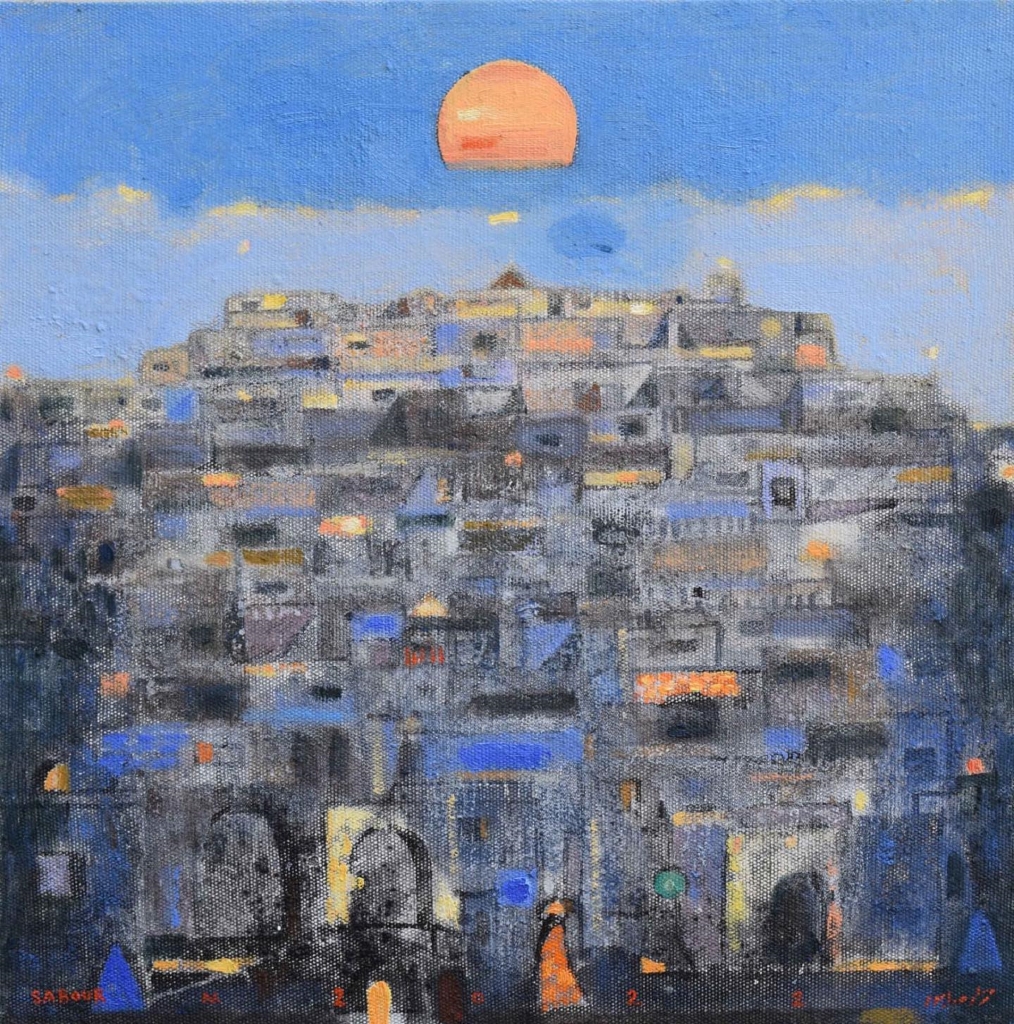Sun and earth colors are combined with pastels and oils to create a stunning color heritage. Sabbur is very attached to his country and more to his city, expressing this attachment in his paintings, saying: “My childhood made a deep impression on me. Everything in my life is connected to the earth. ”
Born in Latakia in 1958, Nizar Sabbur graduated from the Faculty of Fine Arts at Damascus University and then received a PhD in Art from the Stroganov Academy of Industrial and Applied Arts in Moscow. He brings to his cultural repertoire a special influence of ancient history and legends, from the epic of Gilgamesh to icons and miniatures. His works reflect the origins he carries to the present, reflected in the patterns of life, social and current tragedies that engulf our Arab world, from the destruction and conquest of Iraq, to the uprisings. of the Palestinians, through the Syrian war. , which destroyed people, rocks, historical and religious monuments such as Maaloula, Palmyra and Qalamoun. The cities in Nizar Sabbur’s visual narratives seem as archaic as the ancient manuscripts. But it was no longer surprising to look at his paintings, for he felt that he had seen similar works before.
Sabbur aims to make his exhibition a turning point with his plastic experience, which he has been practicing for decades, drawing its intense connotations from various Syrian media, drawing inspiration from iconic art, extensive use of the symbol, its sculpting. over the painting in an accurate manner. , small and large colored miniatures. He has a lot of experience of his own, not forgetting the international schools and artistic movements that he is tired of. Its variations are pleasant, its colors gradual and rich, mixed with inscriptions and symbols. He also brings out the art of Syrian architecture and its ancient landmarks, but with a personal perspective while “reading” the uniqueness of the place and its visual reduction. Visual balance establishes a balance between beautiful and ugly, that is, between art, which is beauty, and destruction, which is ugliness in itself. The geometric lines, which he surpasses, dominate the drawings of birds, animals and landscapes, where, for example, the mountains of Maalula, its rocks and beautiful houses occupy a special place in his paintings.
The colors of the sun and earth mix with pastels and oils in a compelling traditional festivity.
Sabbur also rises to the level of abstraction, mixing the aesthetics of painting with the mental dimensions, and color remains fun and happy, oscillating between ideas and colors in geometric pairs like of the circle and triangle, devoted itself to the senography of history, of man. creatures and places for which he relied on a thorough search of the distant and near memories of Syria, especially concerning the characteristics of the Aramaic cities and the horizontal laws of Palmyra. His painting draws its rhythms from everyday life, and he uses natural materials such as ash added to acrylic and oil, so that his work seems more a product of imagination than reality. . The houses in Maaloula and Qalamoun were covered with vague colors and shapes, which seemed to occupy the diaries of their people, obscured by the clouds of war. The presence of high hills is noticeable in the paintings, which cast shadows on old and historic houses, as if they were icons. Syria’s iconic art and folk epic heritage are strongly present in the paintings hanging in the Cafe, as well as in the graffiti works with the individual and spontaneous tendency to stop us on the city walls. Many elements have been compiled from local arts and international plastics studies.
* “Hafiz Al-Zakira”: until June 20-“Kaf Gallery” (Mar Nicolas-Ashrafieh-Beirut)-for information: 01/334984
Source: Al-Akhbar
